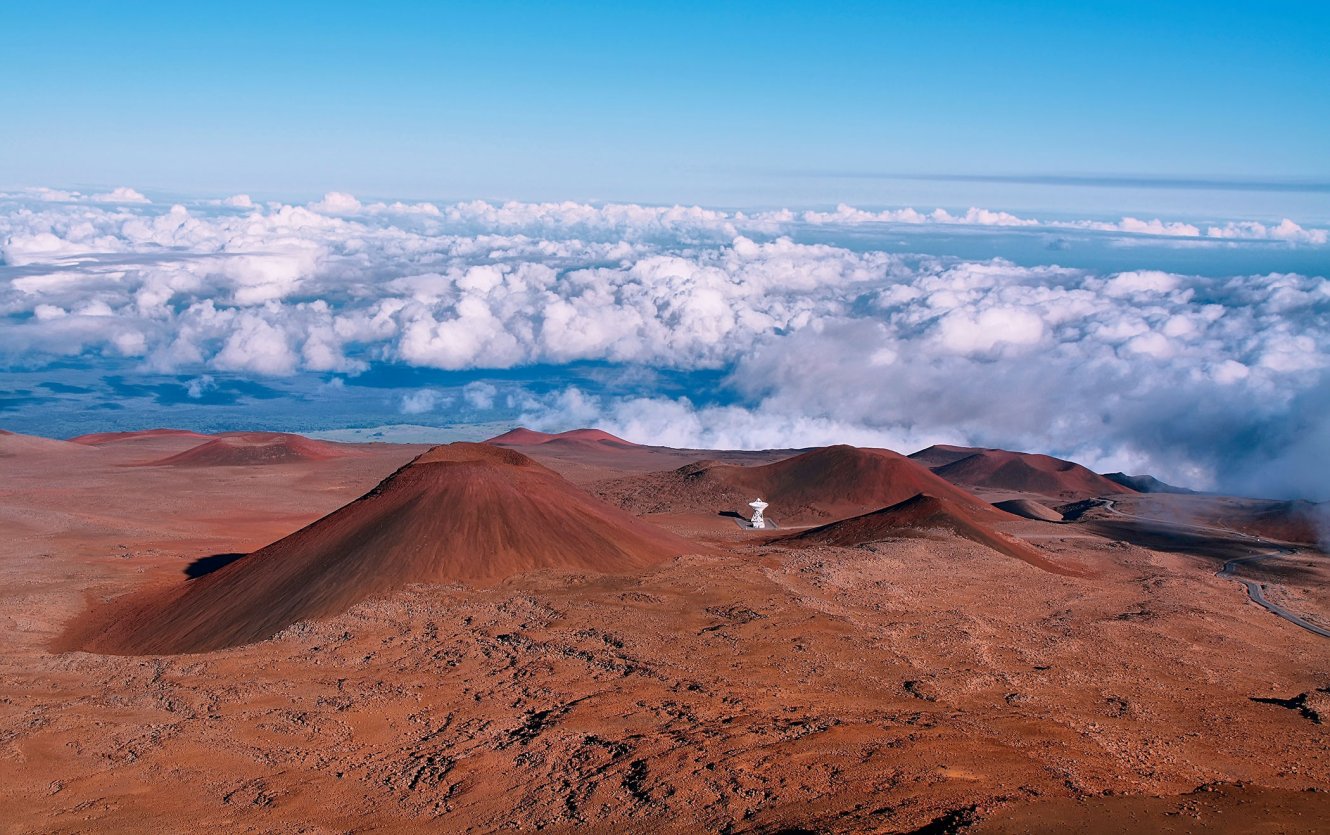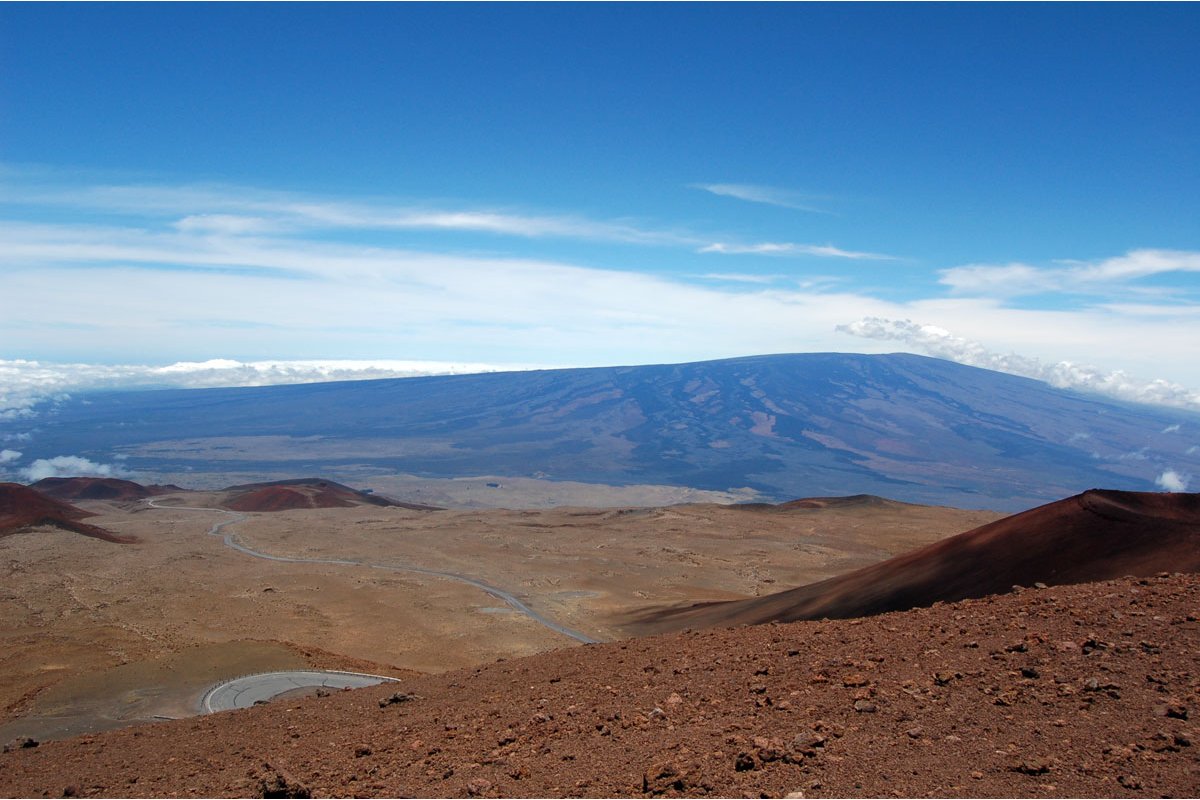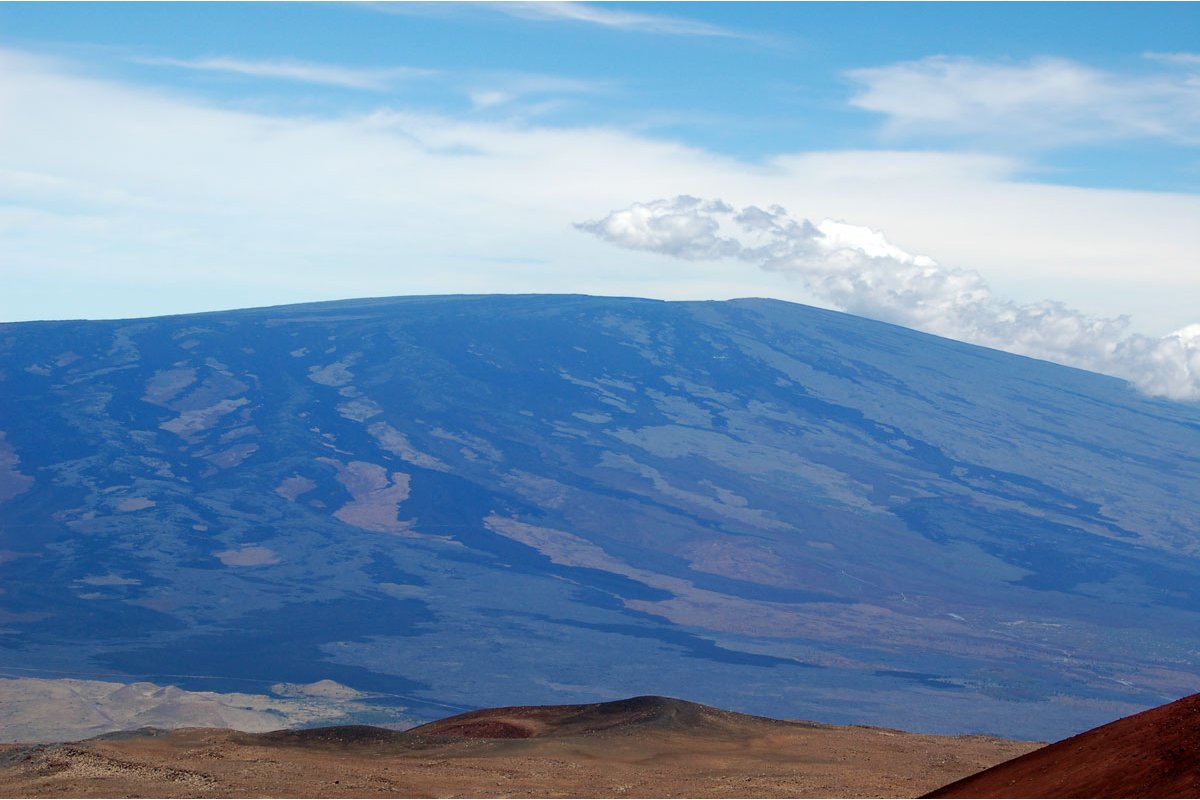Mauna Loa
'Long Mountain' on Big Island
Mauna Loa, or 'Long Mountain' in Hawaiian, is located on the island of Hawaii. It rises 13,680 ft. (4,170 m) above sea level. Since 1843, Mauna Loa has erupted 34 times; its last eruption, before the news breaking 2022 eruption, was in 1984. Mauna Loa is a REALLY tall and big mountain.
Mauna Loa 2022 Eruption
For the first time in 38 years, after several months of increased seismic activity, Mauna Loa erupted in late 2022. See our 'What's Happening Now' section on our Eruption Updates page for current information on both volcanoes.
— article continued below —
2024 Big Island Visitor Guides
Visiting the Big Island of Hawaii soon? Be sure to grab your copy of one of our updated Big Island Visitor Guides.
~ Trusted by Millions of Hawaii Visitors Annually ~

Mauna Loa eruption in Northeast rift zone (Credit: Natalie Deligne/USGS )
At 60 miles long and 30 miles wide, it makes up half of the entire island. When one considers that the flanks of Mauna Loa sit on sea floor that is about 16,400 ft (5,000 M) deep, the "height" of this volcano relative to neighboring land (the sea floor) is more like 30,080 ft (9,170 m)! Mauna Loa is the largest active volcano in the world. In fact, using this last measure of its height, it is one of the tallest mountains in the world (although many mountains, such as Mt. Everest in the Himalaya mountain range, sit higher relative to sea level). All large land masses (such as mountains) also push down upon the Earth's crust due to their enormous weight. So, directly beneath Mauna Loa, the sea floor on which it sits is depressed by an additional 26,000 ft (8000 m). Thus, if one wanted to say how thick (at it's center) is the lava pile that makes up Mauna Loa, one would need to add its above sea level height, its sea floor to sea level height, and the thickness of its depression in the Pacific sea floor. These total 56,080 ft (17,170 m).

Top of Mauna Kea
Quite frankly folks... it's one big mountain. And right across from it on Saddle Road is the tallest mountain in the Pacific, Mauna Kea. Mauna Loa is a "shield volcano", which means it is a gently sloping mountain produced from a large number of generally very fluid lava flows. The volcano has been erupting for at least 100,000 years (possibly more) from a primary volcanic center that is presently manifested by Moku'aweoweo crater at the mountain's summit. It has produced both a'a and pahoehoe flows, and lesser amounts of pyroclastic deposits. Mauna Loa shares the Hawaiian hot spot with its smaller active siblings Kilauea and Loihi seamount. The earliest written account of a Mauna Loa eruption says an eruption took place in 1780. This is shortly after Captain Cook's first visit to the islands. In 1868, an eruption from Mauna Loa caused the largest recorded earthquake in Hawaii, a magnitude 8 by modern standards. The lava flow of 1855-1856 is said to be one of the greatest flows ever seen by modern observers.



























